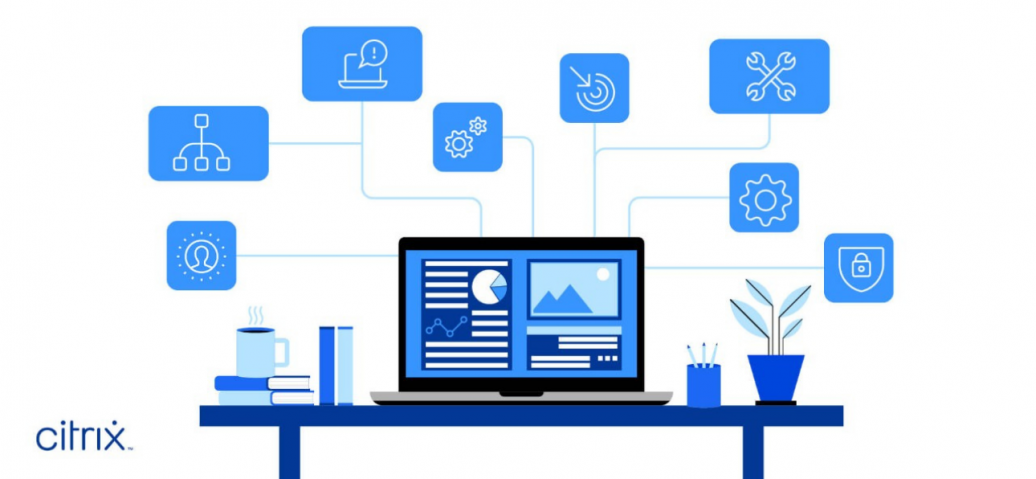As the millennial and Gen Z generations come to constitute more of the workforce, attitudes about remote and hybrid work are evolving.
In the very recent past, working outside of a traditional office all or most of the time was rare. But the combination of the COVID-19 pandemic, generational switchover in the workplace, and the rise of modern collaboration tools has created new possibilities — along with the need for digital workspaces to support everyone.
What is a digital workspace, anyway?
A digital workspace is a combination of new technologies for enabling secure and consistent access to work-related applications, documents and data from any device or location. Whether a company has a handful of remote employees or uses a 100 percent work-from-home model, it will need such a solution to keep teams productive.
A digital workspace is relevant for workers of all types whether they are front line workers, in-office, or remote, and it does more than just simulate the in-person employee experience. An intelligently designed, well-maintained workspace can be more secure, efficient, and functional than comparable legacy technologies.
Key features of top workspaces include:
- Centralized security capabilities: Letting workers access corporate applications and data from their own devices comes with heightened risk that one of those employees’ connections will be compromised. While some companies fight against this danger with virtual private networks (VPNs), that system still leaves the data vulnerable to internal risk. A high-quality digital workspace facilitates single sign-on (SSO) with a zero trust security approach for better protection than a VPN.
- Continuity and agility: Not only does a digital workspace allow dispersed team members to collaborate virtually, it also lets a single employee sign on from various locations with secure access to the same set of apps and centralized data resources. The office, home, on the road — wherever someone’s logging in from, they’re ready to get right to work.
- Productivity and collaboration: Workflows in a digital workspace solution can be better than they were in a legacy, in-person office environment. Equipped with personalized, automation-powered workflows, end users can get their daily tasks done in a quick and efficient way. These professionals can also work together seamlessly, using central copies of files with clear history and version management.
The need for a more secure and efficient way to work is universal, so every company can enjoy the benefits of a digital workspace. For businesses shifting to a hybrid or remote model, though, they’re not just beneficial — they’re downright essential.
Why does a virtual or hybrid workforce need a digital workspace?
Getting a high level of productivity from a virtual or hybrid workforce is no longer a future concern or a hypothetical. Companies across industries and regions have made the shift to remote work during COVID-19-induced shutdowns, and in many cases, they’re sticking with these changes.
Organizations still using their on-premises legacy technologies will quickly discover that these systems were not designed with remote work in mind. This problem needs a response because even the most cloud-friendly organization likely has some local applications and datacenter-based resources alongside its software-as-a-service (SaaS) tools.
As for some of the specific traits that make digital workspaces the perfect option to unite dispersed employees, these include:
- Simplified location and device agnosticism: With a digital workspace, companies can deliver a standardized, centralized user experience to all their workers. No matter where those employees are logging on from and what devices they’re using, they see the same set of applications. By taking this one step further and using a cloud-based desktop-as-a-service (DaaS) option, IT departments can lower their everyday tech upkeep burden while still giving secure, centralized access.
- Flexibility and future-proofing: By creating a centralized way to access numerous applications and data sources, a digital workspace allows companies to expand their capabilities without making drastic changes. Whether this means integrating a new SaaS app, going fully remote, or embracing a new security protocol, organizations can evolve with minimal stress on the IT department.
- Support for freelancers and independent contractors: Increasing use of virtual and hybrid workforces is only one part of the changes occurring across industries. Companies are also choosing to bring in specialists to add necessary skills and complete projects. A digital workspace gives these additional workers a secure, efficient way to collaborate with the permanent employees.
The trend is clear: Companies are becoming more remote, more cloud-based, and more tech-driven overall. By finding technology solutions that will grow with them as they change and evolve, they can stay at the head of their industries as this transition continues to unfold.
The right digital workplace can be the centralized platform these businesses need. Chances are, your organization will need such a solution, and soon.
Want to learn more? Read the Digital Workspaces Guide for an in-depth look at the essential elements of digital workspace success.
